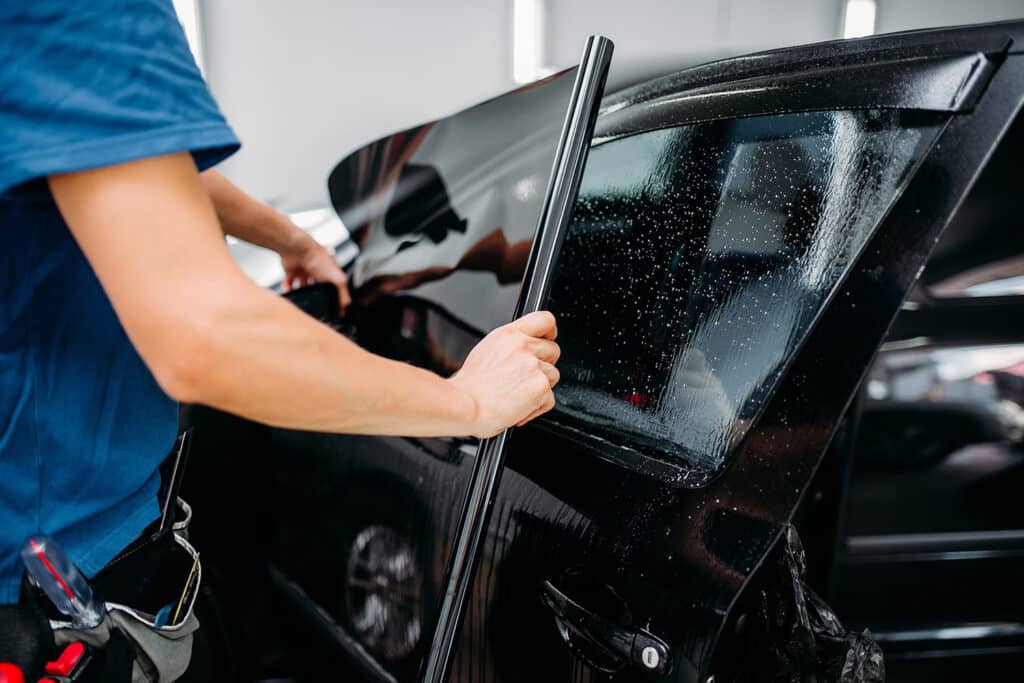If you live in Connecticut and want to get your windows tinted, you’re going to have to be aware of your local laws around this modification.
Tinted windows are as cool as they are functional. They do a great job at elevating your car’s overall aesthetic while also being quite useful in keeping out sunlight, heat, and curious eyes.
But that raises the question of why something as simple as tinted windows is so heavily regulated. The answer has a lot to do with the potential downsides of this upgrade.
Even though light blocking is a great feature during the day, it can be dangerous when driving at night because it will impair your visibility.
Additionally, the privacy offered by tinted windows is taken advantage of by many people to conceal illicit activity, which gives law enforcement a solid reason to regulate this feature.
Window tint laws in Connecticut are more lenient compared to some other states in the US. In this article, we’ll explore these laws in more detail.
Is Window Tint Legal in Connecticut?
Tint laws were first introduced in Connecticut in 1995. The state allows tinted windows for all types of vehicles as long as certain rules, regulations, and specifications are met.
Compared to the stringent tint laws in California, those in Connecticut are relatively lenient. Below we will discuss them in detail.
Permitted Window Tint Darkness

Before we get down to brass tacks, it’s important to understand what “visible light transmission” or VLT means.
This refers to the threshold of any object (tinted glass in this case) to allow light to pass through it. VLT is measured in percentage.
For example, if a window has 80% VLT, it only lets through 80% of the light that it is exposed to.
Objects and surfaces that are extremely dark and reflective have the least VLT percentages. As a result, the darker and more reflective the tint is, the lower the VLT.
Window tint laws are actioned by setting limits on VLT percentages and measuring them. Below you’ll find the permitted VLT levels for various types of vehicles in Connecticut.
Sedans

Windshield: Non-reflective and transparent tint is permitted above the AS-1 line (a line generally 4-6 inches below the top of your windshield)
Driver-side windows: 35% VLT
Passenger-side windows: 35% VLT
Rear window: No limit on the VLT level; any VLT level is permitted
SUVs and Vans
Windshield: Like sedans, SUVs and vans can feature transparent and/or non-reflective tints above the AS-1 line
Driver-side windows: 35% VLT
Passenger-side windows: Any VLT level is legally permitted
Rear window: Any VLT level is legally permitted
Acceptable Tint Reflection

Tint laws also include regulations on the intensity of reflections that the film can produce.
This is necessary because highly reflective surfaces, while being protective to the driver and passengers inside the car, can be a safety hazard for oncoming traffic.
The more reflective a surface is, the more it filters light, making it harder to look through the window if you’re outside the car.
Unlike many other states, Connecticut does allow some degree of reflectivity and metallic elements (silver mirror) in the tint used.
Here are the tint reflection limits for various vehicles as per Connecticut tint laws.
Sedans
Windshield: The tint film must be completely non-reflective and non-metallic.
Driver-side windows: Up to 21% reflection is permitted.
Passenger-side windows: Up to 21% reflection is permitted.
Rear window: 27% reflection is permitted.
SUVs and Vans
Windshield: Non-reflective, non-metallic tint should be used
Driver-side windows: 21% reflection is permitted.
Passenger-side windows: 21% reflection is permitted.
Rear window: 27% reflection is permitted.
Other Connecticut Tint Laws You Need to Know

Here are some more rules to be mindful of:
- Side mirrors: If the rear window is tinted, functional side mirrors are necessary.
- Colored tint: All colored tints are allowed in Connecticut.
- Aftermarket tint: If you have an aftermarket window tint installed, your car needs to be inspected by the DMV. If the VLT is 35% (an allowance of 3% is made either way), then you’re in the clear.
- Tint variance: The State of Connecticut allows a 3% variance in tint darkness and reflection.
- Stickers: Cars with aftermarket tints require a compliance sticker provided by the DMV. The sticker must be affixed between the tinted film and the glass.
- Certificate: Tinted film sold in Connecticut must be certified as legal by the manufacturer.
- Exemptions: All vehicles for hire, limousines, and charter busses are exempt from Connecticut tint laws. Additionally, medical exemptions can be made, with VLT permitted between 20% and 32% in certified cases. An application and a doctor’s certificate must be provided.
- Penalties: Depending on your record, you will be fined a certain amount for violating any of the tint laws. In severe cases, the car can also be impounded.
State of Connecticut Info

Named after the Connecticut River that runs through the state, Connecticut belongs to both the tri-state and New England areas.
This state is best known for its economic development and success.
It has recorded the highest per capita income, highest median household income, and second-highest human development levels in the country in the last decade.
Connecticut shares borders with Massachusetts, Rhode Island, Long Island Sound, and New York.
Population: 3,605,597
Capital: Hartford
Area: 5,543.3 mi²
Registered vehicles: 1,973,586
Total lane miles: 3,719 mi
Number of highways: 8
Tint Law References: Connecticut General Assembly
Medical Exemption References: Department of Motor Vehicles

